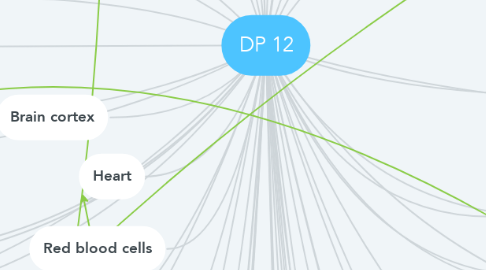DP 12
by Luiz Mello


1. In-situ and ex-situ conservation
2. Bioaccumulation
2.1. DDT
2.2. Mercury
3. Niche
3.1. Competitive exclusion
4. Feed conversion ratio
5. Neural development
6. Learned and innate behavior
7. Brain cortex
8. Starvation / malnutrition
9. Hepatic artery and hepatic portal vein (dual blood delivery in the liver)
10. Surface area / volume ratio
11. Increase surface area of the brain cortex allows for higher executive function.
12. Inheritance
13. Innate behaviors are heritable as they are coded for by genes. Learned behavior is not.
14. Natural selection
15. Finite resource, Phosphorus only becomes available via weathering
16. Interaction between species
16.1. Symbiosis
16.2. Competitions
16.3. Predation
16.4. mutualism
16.5. parasitism
16.6. commensalism
16.7. herbivory
17. Mutation
18. Invasive species
19. Divergent / Convergent evolution
19.1. Homologous structures
19.2. Adaptive radiation
20. Cell respiration
20.1. Produces ATP
21. Synapsis
22. Taxonomy
23. Aminoacids
24. Succession
24.1. Primary succession
24.2. Secondary succession
25. Functions of life
25.1. Metabolism
25.1.1. Anabolism
25.1.2. Catabolism
25.2. Homeostasis
25.3. Nutrition
25.4. Reproduction
25.5. Growth
25.6. Response/Sensitivity
25.7. Excretion
26. Heart
27. Red blood cells
28. Individuals with certain genes are more prone to drug addiction
29. Synapsis functions as the connection between two neurones. Through synapsis, the neurotransmitter transmits from pre-synaptic cell to pro-synaptic cell, so that the specific responses could be transmitted throughout the muscle cells
30. Digestion
31. parasympathetic nerves cause and increase in blood flow to gut wall during digestion and sympathetic nerves cause a decrease in blood flow when fasting.
32. Ventilation
33. Selective breeding
34. The ventilation process exchanges carbon dioxide with oxygen. The oxygen is transferred to the heart through capillaries and vain. The oxygenated blood is then transferred to other parts of the body.
35. Mesocosm
36. Photosynthesis
37. Producers carry out photosynthesis to convert sunlight into organic matter, which is how energy enters a mesocosm.
38. Senses
38.1. Sight
38.2. Smell
38.3. Hearing
39. Neurotransmitters as drugs
40. Essential nutrients
40.1. Certain aminoacids
41. Exocrine glands
41.1. Salivary glands
41.2. Pancreas
41.2.1. Amylase / Lipase
41.3. Sweat
42. Limiting factor
42.1. Temperature
42.2. Food availability
42.3. pH
42.4. Land area / territory
42.5. Substrate concentration
43. Food web
44. Zone of tolerance
45. Climate change
45.1. Greenhouse effect
46. Membranes
46.1. Mebrane transport
46.1.1. Diffusion
46.1.2. Active transport
46.1.3. Facilitated diffusion
46.1.4. Osmosis
